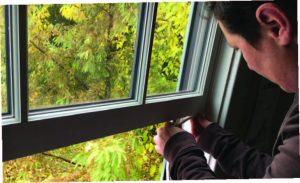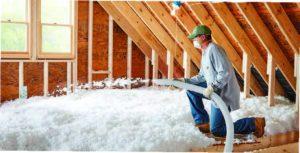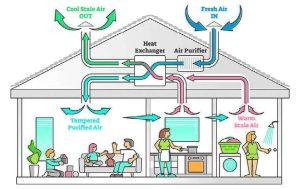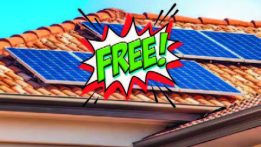You have taken all the steps to bring your energy bill down every month, so why does it not seem to be helping? Maybe it is time to update your home weatherization, the process of protecting your home from the elements. Taking the steps to weatherize your home can help keep your home cooler in the summer and warmer in the winter and save you money by saving energy.
Home Energy Audit
A home energy audit will determine where in your home you are losing energy, how much energy your home uses, and areas that you should prioritize repairing. It is possible to complete your own energy audit. However, a professional has the knowledge and equipment to give you a proper overview of your energy use. You may also call Tallahassee Utilities at (850) 891-4968 to schedule a free energy audit at a time most convenient for you.
Sealing Air Leaks
 Air leaks occur when the air from the outside leaks in and the conditioned air leaks out through small openings throughout your house. Common trouble spots for air leaks are the windows and doors, chimney flue or shaft, ducts, and even the floor. Your home energy audit should help you detect any areas in your home that are leaking air. Once you have located these areas, use an air-sealing material, such as caulk or weatherstripping, to seal the leak. In addition to sealing doors and windows, some tips for sealing leaks are to seal the spaces where electrical wiring, duct work, or plumbing come through the walls. Close the damper of your fireplace and cover the exhaust fans in your kitchen and bathrooms to keep air from leaking when not in use. Locating and sealing the air leaks throughout your house will also help you to avoid moisture issues and bad air quality.
Air leaks occur when the air from the outside leaks in and the conditioned air leaks out through small openings throughout your house. Common trouble spots for air leaks are the windows and doors, chimney flue or shaft, ducts, and even the floor. Your home energy audit should help you detect any areas in your home that are leaking air. Once you have located these areas, use an air-sealing material, such as caulk or weatherstripping, to seal the leak. In addition to sealing doors and windows, some tips for sealing leaks are to seal the spaces where electrical wiring, duct work, or plumbing come through the walls. Close the damper of your fireplace and cover the exhaust fans in your kitchen and bathrooms to keep air from leaking when not in use. Locating and sealing the air leaks throughout your house will also help you to avoid moisture issues and bad air quality.
Insulation
 Proper insulation keeps your house cool in the summer and warm in the winter because of the way heat flows. Heat in or around your house will naturally flow to the cooler areas in your house. When your heater is on in the winter, the warm air will move to the unheated parts of your house. Without proper insulation, in the heat of summer, the warm air from the outside will flow into your home, giving your air conditioner a tougher job of keeping your house cool. Most insulation materials slow the movement of heat through your house.
Proper insulation keeps your house cool in the summer and warm in the winter because of the way heat flows. Heat in or around your house will naturally flow to the cooler areas in your house. When your heater is on in the winter, the warm air will move to the unheated parts of your house. Without proper insulation, in the heat of summer, the warm air from the outside will flow into your home, giving your air conditioner a tougher job of keeping your house cool. Most insulation materials slow the movement of heat through your house.
The effectiveness of insulation is measured by its R-value or its heat resistance. Placing more insulation in your home ultimately increases the value of the insulation’s effectiveness. Where you place your insulation throughout your house will also affect the efficiency of the material. The amount and type of insulation you need depends on your climate, the type of heating and cooling system you use, where you plan to install the insulation, and the R-value of the insulation needed. To know the best R-value for your home insulation needs, check with local building codes. Bulky insulation, like fiberglass or cellulose, keeps heat from moving through the exterior materials of your house into the interior. Reflective foil insulation reflects heat away from your house, and foam board insulation traps gases to keep the heat from moving into your home with warm air flow. For optimal comfort and energy efficiency, insulation should be installed from the top of your home all the way down to the foundation, keeping in mind the type of insulation each part of your home needs. This will help seal off any air leaks and keep your home comfortable.
Ventilation
 Ventilation is especially important when it comes to home maintenance and energy efficiency. Air sealing your home is great for keeping the air you want in, but it can also keep the air you do not want trapped inside as well. Having proper ventilation can help to move toxic contaminants, like formaldehyde and radon, out of your breathing air. Ventilation also helps with moisture control, which can reduce the growth of harmful molds in your living space. There are three different ways to use ventilation in your home.
Ventilation is especially important when it comes to home maintenance and energy efficiency. Air sealing your home is great for keeping the air you want in, but it can also keep the air you do not want trapped inside as well. Having proper ventilation can help to move toxic contaminants, like formaldehyde and radon, out of your breathing air. Ventilation also helps with moisture control, which can reduce the growth of harmful molds in your living space. There are three different ways to use ventilation in your home.
- The first type of ventilation is natural ventilation. Natural ventilation can occur through air leakage and can remove polluted air, but since you want to seal air leaks in your home, you will want to find more energy efficient ways to ventilate it. The simplest way to naturally ventilate your home is by opening doors and windows. Some downsides to natural ventilation is that there is no way to control the amount of air that is flowing through your home, there is no uniform way to ventilate your whole house, and it only works on days with mild weather.
- The second type of ventilation is spot ventilation. When you turn on the exhaust fan in your bathroom or above your stove, you are using spot ventilation. This type of ventilation can remove polluted air and moisture from the areas of your home that are most affected.
- The last type of ventilation is whole house ventilation. Because natural and spot ventilation may not be an adequate source of ventilation for your whole home, some homeowners look into a whole home ventilation system. These systems use fans and ducts to move stagnant air out and provide fresh air. This will provide your home with controlled, uniform ventilation. When looking into a whole home ventilation system, there are four types to choose from but three that work best in Tallahassee’s warm, humid climate.
- Supply ventilation systems pressurize your home pushing air from the outside in and forcing air from the inside out through ducts or vents. Supply ventilation systems are easy and inexpensive to install and keep pollutants in your home to a minimum, but they do not remove moisture from the air before pushing the air throughout your home.
- Balanced ventilation systems usually use two fans and two ducts to bring in an equal amount of fresh air as polluted air that is being pushed out. Because these systems use two fans and ducts, they are more expensive to install, and they also do not remove moisture from the air.
- Energy recovery ventilation systems work by taking the air that is pushed out of your home and turning it into energy, which then in turn is used to continue to ventilate your house. There are two types of energy recovery ventilation systems. One is an energy recovery ventilator, and the other is a heat recovery ventilator. Both transfer heat from your house and turn it into energy, but the energy recovery ventilator transfers heat and moisture, whereas the other only transfers heat. Energy recovery ventilators can help to lower the humidity throughout your home in the summer and keep the humidity balanced in the winter. Energy recovery ventilation systems are more expensive to install but may save you more money in the long run.
Moisture Control
In addition to keeping your home comfortable, controlling moisture in your home can prevent the growth of mold. As mentioned above, proper sealing and insulation provides moisture control. Also, in homes with crawlspaces, install a polyethylene cover on the ground. This vapor-impermeable material will help to keep moisture from the foundation. Rain penetration can also be a source of moisture and is usually caused by improper installation or faulty siding or flashing. Check the quality of your siding materials and repair or replace them as needed.
Weatherizing your home can be a lot of work and may require the help of a qualified professional. If you are up to taking the steps necessary to improve your living space, it can be well worth the time and effort you put in. Updating your weatherization and insulation will not only make your home more enjoyable throughout the seasons but will also help you to save money in energy costs. ![]()
Aliyah Robinson
Home & Yard Magazine




